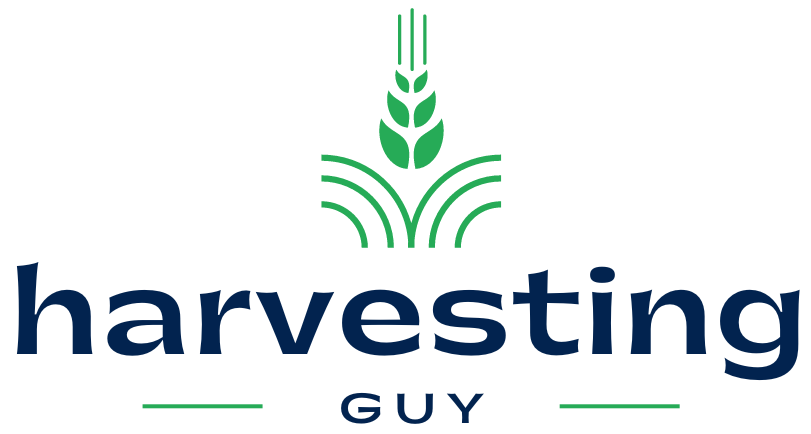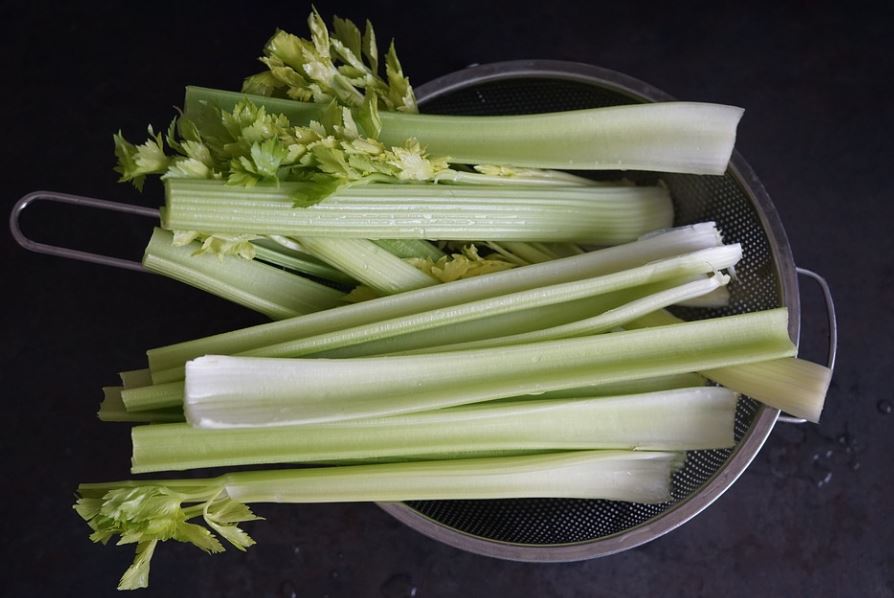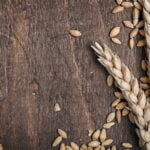If you are into growing your food, you may consider growing your celery for all your celery needs. Part of the growing process would also imply you should learn how to harvest celery properly. The reason why today, we’ll be sharing with you exactly that; how to harvest celery and more essential tips.
Did you know that celery is pretty simple to grow? Celery proves an invaluable ingredient. It’s a great base vegetable for many dishes; once sweated until soft, its peppery taste can add a real savory depth. You can use celery when making vegetable, meat, or fish stock.
And though it may seem to sound a little intimidating at first, especially if you are new to growing your food, you have nothing to worry about. Harvesting is also a relatively simple process. With the right guide and equipment, you’ll soon become a pro at harvesting celery right at home.
How to Harvest Celery
Harvesting celery stalks
- Cut the outer stalks from the plant 12 inches long using a clean serrated knife.
- Cutting at soil level, make a straight slice from the outside of the stalk toward the center of the plant but avoid cutting into the inner stalks.
- You can leave the inner stalks in place to grow longer if temperatures remain above 50 degrees.
Recommended Product: Orblue Serrated Knife
[amazon box=”B011CY8Y78″ class=”lp-product-list” template=”vertical” image_size=”large” title=” ” image_alt=”alttexthere” description=”none” price=”none” button_text=”Check Latest Price” ]
The Orblue Serrated Bread Knife blade has an ultra-sharp serrated edge that grips and effortlessly slices the toughest loaves of bread to provide a smooth, clean cut.
The blade runs 8 inches long with a 5-inch handle. Included as an added safety measure on the knife’s sharp tip is a rubber safety guard.
The knife was ergonomically designed with careful attention to detail to slice comfortably and efficiently. The handle is made to perfectly fit any grip, making cutting a breeze.
Features:
- Stainless Steel
- Serrated
- Durable
Harvesting celery seeds
- To harvest celery seeds, allow some or all plants to bolt, growing beyond their harvest window.
When seed stalks appear on the tops of the plants with green flowers, you should discontinue watering. - Allow the celery plants to become brittle and dry, then remove them from your garden bed.
- Gently tap the flowers with a spoon, or shake them over a bowl, to capture the cured seeds, which you can use in the kitchen, or save for the next growing season.
Recommended Product: KitchenAid Classic Bowls with Lids
[amazon box=”B07TMR8JZ6″ class=”lp-product-list” template=”vertical” image_size=”large” title=” ” image_alt=”alttexthere” description=”none” price=”none” button_text=”Check Latest Price” ]
Made from durable, lightweight plastic, these bowls make great to-go containers for side dishes, dressings, and sauces.
These small bowls nest together when not in use for easy, space-saving, compact storage. Prep bowls and lids are dishwasher-safe for fast and easy clean-up.
Features:
- Dishwasher safe
- Different sizes
Additional Tips on How to Harvest Celery
- PEFC certified
- Celery grows slowly in cool weather, taking approximately 100 days to reach maturity.
- Cutting the celery for harvest properly helps ensure the best stalk formation and improves the vegetable’s storage quality.
- Fall and winter crops require cutting and harvesting promptly if temperatures drop below 50 degrees Fahrenheit for more than 12 hours; otherwise, the plants bolt and send up seed stalks, which ruins the flavor of the stalks.
- Don’t worry if your celery stalks are darker or smaller than the average grocery store bunch; those are often grown in greenhouses and exposed to pesticides.
How to Harvest Celery FAQs
When to plant celery?
Celery is a cool-weather crop that’s easily affected by frost, which means there’s a separate window when temperatures will be optimal for planting.
How to plant celery?
- Select a space in your home with direct sunlight, like a windowsill.
- Soak seeds in warm water the night before planting to help them germinate quicker.
- Press, but do not cover, seeds into a starter tray filled with soil.
- Once seedlings appear, remove plastic wrap and position a grow light overhead.
- When seedlings reach two inches high, it’s time to begin exposing them to the outdoors in preparation for planting.
- The seedlings can be planted in your home garden when the soil is a minimum of 50 degrees Fahrenheit and there is no danger of frost.
- When transplanting your celery seedlings, make sure to sow them at the proper depth: ½ inch deep, eight inches apart.
- Tamp the soil firmly around them with the palm of your hand and water whenever the ground surface dries out.
How to care for celery?
- Water regularly. Celery needs a lot of water constantly. Even temporarily dry soil can have adverse effects on the final crop.
- Weed with care. Celery roots are shallow and easily disturbed just below the soil’s surface.
- Mulch is your friend. By covering the soil with organic matter, weeds have difficulty germinating, and the earth is kept cool and moist.
- Protect the plant. Use row covers during the first growing month to protect young plants and new stalks from insects like aphids and earworms.
- Use companion planting. Companion planting can help protect your celery from pests. Plant your celery near garlic, shallots, sage, dill, and mint to attract pollinators and repel fungus and invasive insects.
How do you harvest celery so it keeps growing?
If you don’t need the whole plant, cut stalks as needed. If you cut just the stalks you need, the plant will keep producing new stalks. Harvest individual stalks from the outside in. Cut individual stalks or the whole plant with a serrated knife.
Does celery grow back after cutting?
Most plants grow from seeds, but some produce tubers, stem cuttings, or bulbs. In the case of celery, the plant will regenerate from the base and regrow new stalks. To begin re-growing celery, cut the bottom root from the stalks about 2-3 inches or approximately 5-7.5 cm.
How do I know when to harvest celery?
To know when to harvest celery, you must know that celery can take up to 140 days before it is ready to harvest. Begin to harvest the celery when the lower stalks are 6 inches long but the stalks are still close together. Upper stalks should reach at least 18 inches before they are ready to be picked, with a diameter of 3 inches.
When to harvest celery?
- Harvest celery as soon as the stalks are big enough to use, about 6 inches or longer from the soil line to the first leaf.
- Cut off individual stalks or slice off the whole plant at or just below the soil line. The inner stalks are the most tender and taste the best uncooked; dark green stalks contain the most nutrients.
- Whole plants are ready for harvest when they are 3 inches or more in diameter. Harvest complete plants that are compact and tight without open spaces at the center of the stalk.
- Celery can be harvested through the winter in mild-winter regions. In cold-winter areas, celery should be harvested before a freeze and protected from frost. Protect celery from frosts by mounding up soil around the plant.
How do you cut celery from a plant?
If your goal is to harvest the whole celery, you can harvest the entire plant when the base is about 2 to 3 inches in diameter. Slice straight through the celery plant beneath the base and right at soil level with a clean knife. The stalks remain joined together at the base, and the roots remain in the ground when the entire celery bunch is correctly cut.
What to do with celery after harvesting?
Rinse the soil from the celery stalks after harvest. Pat the stalks completely dry to prolong storage life.
How to store celery?
- Store celery cold and moist, 32°-40°F, as cold as possible without freezing–and 95 percent relative humidity. Cold and moist storage is a challenge. A refrigerator is cold, but the air is dry.
- Wrap celery in a moist cloth or paper towel and place it in a perforated plastic bag in the vegetable crisper section.
- Celery with the leaves attached will keep in the refrigerator for a few days, without the leaves for up to two weeks.
If celery is stored too warm or cold, the quality will deteriorate, and stalks will turn yellow and pithy.
Recommended Product: Presto Paper Towels
[amazon box=”B074CR89QG” class=”lp-product-list” template=”vertical” image_size=”large” title=” ” image_alt=”alttexthere” description=”none” price=”none” button_text=”Check Latest Price” ]
You made it with pulp sourced from sustainably managed forests and controlled sources. These Presto paper towels are up to 75% more absorbent and offer flex-a-size, which lets you suit your towel to your mess.



